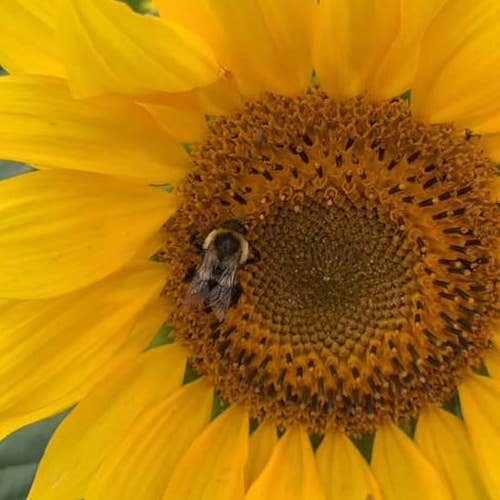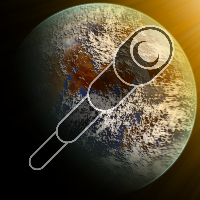Zhuju
Zhūjù (蛛巨 / ʒud͡ʒʉ), sometimes called "Martian megarantulas," are a clade of quite large, highly genetically modified spiders originally created as livestock in Mars' Mariner Valley region. The various breeds of zhūjù are chimeras of several disparate families of spider: tarantulas (for size, cold tolerance, and xeric adaptations), orb weavers (for silk quality and web behaviors), and jumping spiders (for intelligence and low-gravity locomotion). These creatures, while domesticated and generally docile, are considered mesocarnivores (much like dogs) and mainly feed on other engineered megarthropods like the abundant dunehoppers.
Biology
Zhūjù are genetic chimeras, created as part of the third wave of organisms specially designed for the Martian terraforming project. Mars' high-oxygen atmosphere and low gravity made arthropods a desirable choice for the first macrofauna, and spiders were among the best candidates for top-level predators in the fledgling ecosystem. Early versions of Mars' iconic, oversized arachnids were much smaller than modern zhūjù, only growing up to thirty centimeters in legspan. As the atmosphere grew denser, larger versions were able to survive, culminating in the modern zhūjù: over a full meter in legspan and two-thirds of a meter tall.Anatomy & Morphology
Zhūjù greatly resemble their arachnid templates in most respects, apart from size and some modified internal anatomy. Like other Martian megarthropods, zhūjù were helped along by tetrapod-derived modifications to their respiratory and circulatory systems, notably the replacement of their book lungs with sac lungs and hemocyanin with hemoglobin as their oxygen carrier. These spiders carry the majority of their organs in their abdomens, including lungs, heart, and lower digestive tract. The brain and fore digestive tract reside in the robustly-muscled cephalothorax, allowing coordinated control of the creatures' four pairs of legs, plus a pair each of pedipalps and chelicerae. They also possess large spinnerets at the ends of their abdomens, which produce copious amounts of precious silk.Perception & Sensory Capabilities
Contrary to popular belief, spiders do not have compound eyes like insects do. Instead, all spiders --including zhūjù-- bear anywhere between zero and twelve simple focal-lens eyes, spaced around their cephalothorax to allow for keen forward-facing depth perception and a wide field of vision. Zhūjù vision is quite good, and they supplement their visual sense with strong mechanoreception: sensing vibrations in the environment around them with specialized, highly sensitive setae on their forelegs and pedipalps.Taxonomy
As genetically engineered organisms, zhūjù do not fit neatly into the natural phylogenetic tree of terragenid life. They mostly contain genetic information from three (or more) different families of spider, as well as some sequences from certain kinds of cicada and frog. However, zhūjù can reproduce naturally to create viable offspring with only slightly higher-than-normal odds for congenital defects, and thus feral populations have the potential to evolve naturally. For this reason the various strains of zhūjù have been placed into the artificial clade "Megaraneae" alongside other modified Martian spiders.Ecology
Geographic Origin & Distribution
Zhūjù were first created in the 24th century in the biotech labs in Coleridge, one of the earliest Martian settlements. However, they gained significant popularity in Xinshijie and the greater Noctis region, leading to their common name (which is a shortened form of the Mandarin words for "giant spider"). On modern Mars, various breeds of zhūjù are farmed quite extensively in Noctis and Mariner Valley. Wild populations occur across eastern Tharsis, Tempe, Lunae-Xanthe, Margaritifer, and Arabia Terrae. A transplanted population was introduced to Elysium rather recently, and they seem to have readily established themselves in the Elysian lava tubes.Habitat & Niche
Zhūjù prefer dimensionally complex environments with lots of vertical space, though due to their size they tend to prefer rock formations to forests. The lava tubes of the Tharsis region are ideal habitat for the enormous arachnids, allowing them to shelter in dark crevices during the day and emerge to hunt on the crags at night. Despite centuries of terraforming the Tharsis highlands are still relatively dry, which zhūjù have developed an ingenious solution to: trapping large quantities of dew on web lines cast in strategic spots.Behavior
The behavior of these giant spiders varies depending on the specific breed. Wild strains are active ambush predators, seeking out and taking down prey instead of trapping it in webs. These zhūjù varieties primarily use silk in the construction of their lairs, reinforcing their burrows with webbing. However, domestic strains have more orb-weaver genetics, and prize breeds like the Noctis Jewel are known to construct massive webs across the narrow crevices that dominate the Noctis landscape. Zhūjù in general are not particularly social animals, but tend to peaceably tolerate the presence of other spiders --moreso in domestic breeds than wild ones. Originally engineered with the express purpose of being farmed for their silk, zhūjù are generally docile toward humans. They are quite intelligent, and have problem-solving skills rivaling those of canines: like dogs, zhūjù can be trained to follow commands.Archive Data
ORIGINS
Araneidae
Salticidae
- visual (380 - 750 nm)
- auditory (20 Hz - 20 kHz)
- tactile (1 μm limit)
- olfactory
The values presented here describe the conditional limits of sustained indefinite survival. The species can survive more extreme conditions for shorter amounts of exposure.
Gravity limit
1.5 G
Pressure range
0.5 to 2.5 atm
Air mix
15% to 60% O2
Temperature range
10 to 30 °C
Radiation limit
- Gamma: 0.25 Gy
- Beta: 0.05 Gy
- Alpha: 0.0125 Gy





I really don't like the idea of spiders that big ... I can barely stand their smaller relatives. I didn't quite understand most the the biology due to a lack of the very specific vocabulary, but that might not be a bad thing, considered you are describing a spider ...
I'm not sure if diagrams would help or hurt in this case, heh. Personally I adore the little critters, but maybe I should put a content warning at the top of the page just in case?